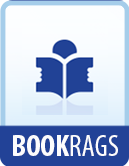His chemical operations seemed to an unskilful observer to premise nothing but disasters. He had blown himself up at Eton. He had inadvertently swallowed some mineral poison, which he declared had seriously injured his health, and from the effects of which he should never recover. His hands, his clothes, his books, and his furniture, were stained and covered by medical acids—more than one hole in the carpet could elucidate the ultimate phenomena of combustion, especially in the middle of the room, where the floor had also been burnt by his mixing ether or some other fluid in a crucible, and the honourable wound was speedily enlarged by rents, for the philosopher, as he hastily crossed the room in pursuit of truth, was frequently caught in it by the foot.
The same eagerness of discovery is shown in his passion for kite-flying as a boy:
He was fond of flying kites,
and at Field Place made an electrical
one, an idea borrowed from
Franklin, in order to draw lightning
from The clouds—fire
from Heaven, like a new Prometheus.
And his generous dream of bringing science to the service of humanity is revealed in his reflection:
What a comfort it would be
to the poor at all times, and especially
in winter, if we could be
masters of caloric, and could at will
furnish them with a constant
supply!
Shelley’s many-sided zeal in the pursuit of truth naturally led him early to invade theology. From his Eton days, he used to enter into controversies by letter with learned divines. Medwin declares that he saw one such correspondence in which Shelley engaged in argument with a bishop “under the assumed name of a woman.” It must have been in a somewhat similar mood that “one Sunday after we had been to Rowland Hill’s chapel, and were dining together in the city, he wrote to him under an assumed name, proposing to preach to his congregation.”
Certainly, Shelley loved mystification scarcely less than he loved truth itself. He was a romanticist as well as a philosopher, and the reading in his childhood of novels like Zofloya the Moor—a work as wild, apparently, as anything Cyril Tourneur ever wrote—excited his imagination to impossible flights of adventure. Few of us have the endurance to study the effects of this ghostly reading in Shelley’s own work—his forgotten novels, Zastrossi, and St. Irvyne or the Rosicrucian—but we can see how his life itself borrowed some of the extravagances of fiction. Many of his recorded adventures are supposed to have been hallucinations, like the story of the “stranger in a military cloak,” who, seeing him in a post-office at Pisa, said, “What! Are you that d—d atheist, Shelley?” and felled him to the ground. On the other hand, Shelley’s story of his being attacked by a midnight assassin in Wales, after being disbelieved for three-quarters of a century, has in recent years been corroborated in the most unexpected




